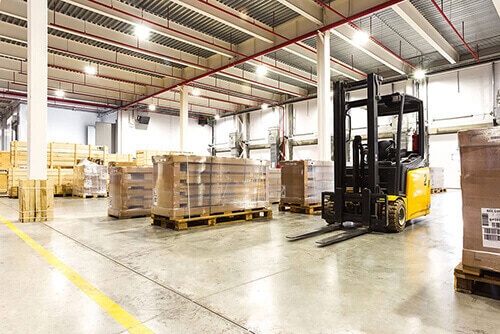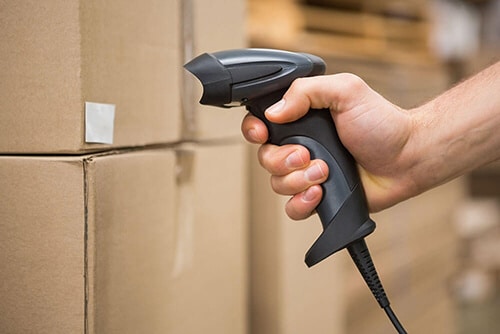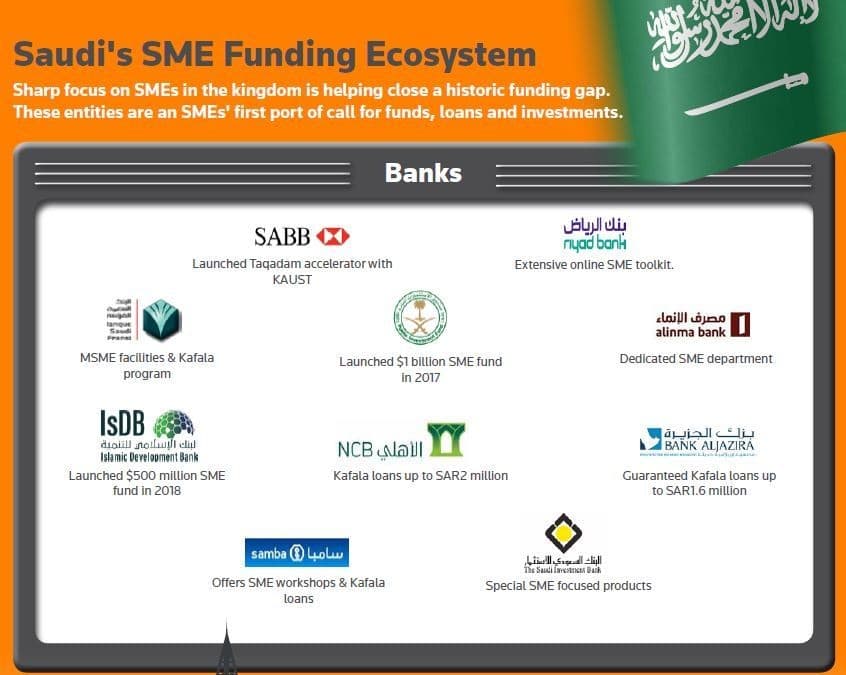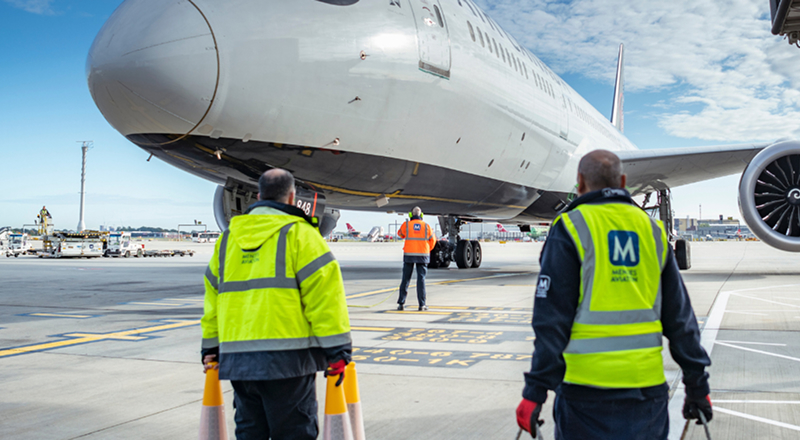Digital technology is changing the way the world does business and doing so at an extraordinary pace. Whatever your part in the supply chain – customer, supplier, or logistics provider – the speed at which new technologies are being developed can be bewildering.
Agility is working with customers and partners to adapt to this fast-changing landscape. This guide is intended to help you identify which technologies your business should be concentrating on right now.
Keeping pace with change
Agility’s Chief Digital Officer Biju Kewalram says the supply and logistics industry is at a very early stage of its digital evolution, and compares it to the period of the Model T Ford in the car industry.
But just as with the development of the auto industry, some of the areas that attract a lot of hype may prove to be expensive dead ends and some of the less glamorous technologies may turn out to deliver the best returns on investment.
Should you spend heavily on cutting edge last-mile solutions like delivery drones? Does your warehouse need to be fitted with advanced robotics or augmented reality? Without limitless funds for research and development, how will you know what works for your business?

Staying agile
Success in the digital supply chain will be determined more by fostering the right mindset than making the right bet on a particular technology. The key is to take an agile, experimental approach.
The unprecedented pace of change means traditional ways of evaluating technologies are outdated. There simply isn’t the time for a company to carry out a full-scale trial to study how a technology will affect its entire business.
At the same time, sweeping one-off changes to the company’s entire workflow are likely to be too expensive, and too late.
Instead, Agility recommends continuous incremental change – small trials and pilots on a specific part of your process. This allows the trials to be evaluated using real data on the actual impact on your business, rather than based on intuition or hopes for what the technology might one day do.
Successful tries should be scaled up, and monitored carefully as the technology is spread through different parts of your business. But it is also important to be prepared for experiments to fail, and to be able to walk away with small losses. Those failures – and the knowledge of how and why something didn’t work – can then be applied to the next trial.
The success of many technologies will depend on the development of new ecosystems. It’s best to work with trusted partners and other stakeholders to find out how the changes you make affect each other.
There will be no settled end state. We live in an age of continuous innovation. Ever-changing technology means there will always be a need to keep experimenting. Technologies that didn’t have the desired effect when you tried them the first time will need to be looked at again and again, as your processes and the environment you operate in evolves.

Four Technologies to watch
This is what Agility is doing constantly: working with partners all the way along the supply chain to test how emerging technologies work in the real world.
We currently have a watch list of 16 technologies that are worth keeping an eye on, ranging from machine learning and the cloud to 3D printing, virtual reality, autonomous vehicles and drones.
We have identified four of these that everyone in the supply chain should focus on.
These are already being used to a greater or lesser degree in certain areas of supply and logistics. We believe they will be the foundation of many of the changes likely to sweep through the industry.
They are the BIRD technologies – Blockchain, Internet of Things (IoT), Robotic Process Automation (RPA) and Data Science. Agility has created guides to each of these that help explain how they work, what they can do, and how they can benefit your business.
The BIRD technologies overlap when it comes to how they enhance the way we use data and harness the potential of the digital revolution.
Blockchain establishes trust in data.
Internet of Things provides a vast quantity of relevant data points.
Robotic Process Automation improves the accuracy of data.
Data Science extracts value.
Companies that successfully integrate these four technologies will be in a strong position to take advantage of whatever comes next.
What the future holds
Imagine a product rolling off a production line. From that moment, it is tracked. Its location, tilt, and temperature are securely recorded on an encrypted ledger that cannot be faked. All relevant parties – manufacturer, exporter, shipper, importer, customs official, wholesaler, retailer – have immediate access to the information they need. That information is automatically processed, and there are no errors. The route chosen has been optimized to be cheap, safe, quick, and with the minimum carbon footprint.
Payments can be made immediately with no need for lines of credit. The end recipient knows they are getting exactly what they ordered, delivered in perfect condition. There have been no hold-ups for paperwork, document checks, or delays at port. Lower costs, more satisfied customers, better profit margins.
This is all possible using technology that exists today. Within just a couple of years, it will be common across the industry. With Agility’s help, your business, large or small, can lead the way.
Brazil is the third-largest trucking market in the world after China and the USA, but has historically struggled with poor road freight infrastructure and a supply-and-demand imbalance between freight and trucks.
CargoX, which has been called the Uber of Brazilian trucking, is using big data, machine learning, and the sharing economy concept to radically overhaul the country’s cargo transportation system.
CargoX has built a marketplace via mobile app that connects over 250,000 truckers with shippers moving goods around Brazil. The app reduces costs for shippers, boosts truck drivers’ income, and increases efficiency.
Since it launched three years ago, CargoX has enjoyed massive success, attracting millions of dollars of investment and swiftly dominating the Brazilian trucking market.
We spoke to founder and CEO Federico Vega about the company’s success, and about how machine learning and big data are transforming trucking.
How is CargoX using data and machine learning to improve Brazilian trucking?
We’ve been compiling and analyzing data since 2013, and more than 60% of truckers in Brazil now connect to our app on a monthly basis.
This level of market penetration provides us with an unrivaled level of data, which makes our real-time updates incredibly accurate. The richness of our data, paired with our technology, is what puts CargoX ahead of any competitor and makes our app so effective.
Our machine learning algorithms can calculate where trucks are likely to be at a certain time, solving the problem of 40% to 60% of trucks in Brazil running empty because they can’t find a load. For example, if a truck is in São Paulo now and will be in Rio de Janeiro in a few days, the algorithm can predict this and can match the truck capacity with freight that needs to be transported.
Machine learning can also help to improve safety and decrease the chances of freight theft, which is quite common in Brazil. Data on freight robberies such as location, type of freight, and time of year are used by the machine learning algorithm to calculate ways of lowering the risk.
By using data and machine learning to improve trucking safety and efficiency, we’re making a positive difference for shippers, truckers, and the wider community.
Why do truckers choose to work with CargoX?
We estimate that truckers can earn around 30% more when they work with CargoX because with other carriers they spend a lot of time traveling empty. Our business model ensures that they are always traveling with a full load, so they make more money per kilometer.
It also provides a more efficient, streamlined process for the truckers. On average, truckers in Brazil have to travel 60 kilometers to find loads. With the CargoX app, you can search for a load nearby, and then secure it and pick it up.
We also solve the problem of truckers going unpaid, by conducting credit checks and background checks on the shippers who use our platform. And once a driver has accepted and delivered a load, they’re paid by CargoX, so we guarantee their payment and take some credit risk on their behalf.
And what about the benefits that CargoX provides for shippers?
Once you open a CargoX account, you can post your freight on a web dashboard and then it gets pushed to drivers via the mobile app, along with the pricing. When a trucker accepts the load, they deliver it and get paid.
Our dashboard enables shippers to track and analyze their loads, which is really useful when shippers are moving hundreds or even thousands of loads every month.
CargoX launched in 2016, and has been very successful in a short period of time. What has been the key to your rapid growth, and what advice would you give to other entrepreneurs?
We were in a good position to grow fast without making as many mistakes as competitors because we had the involvement of highly knowledgeable investors like Agility. CEO Tarek Sultan has been excellent at providing advice and pointing us in the right direction. He’s also been able to make valuable introductions to everyone from financial investors to potential clients, and provided information on things we could do here in Brazil that Agility has done elsewhere in the world.
With a board of directors, advisors and investors who go beyond being sources of capital and who really understand your business, you can get ahead of the competition. We are a trucking company, but we’re also a technology company. One of our investors and directors is Oscar Salazar, co-founder and former CTO of Uber, who has the knowledge needed to run the technology side of the business. And then someone like Tarek has deep knowledge of how to run a logistics business, but also has the entrepreneurial expertise, and knows how to rapidly grow a company. And the involvement of Eddie Leshin, the former CMO of US freight marketplace Coyote Logistics, has been invaluable too.
This depth of knowledge and experience really makes a difference when you’re starting and scaling your business, and also commands more investment, as people can see that you have the involvement of people with experience and you’re more likely to thrive.

Head, Agility Ventures
I recently attended a Business Year conference on the role of the private sector in the future of the Kuwaiti economy. The event highlighted Kuwait’s potential to support a vibrant start-up community, but the need was clear for entrepreneurs to capitalize on the country’s digital transformation to drive innovation.
I spoke on a panel alongside entrepreneurs from other well-known Kuwaiti brands including Carriage and Just Clean. There were also insightful contributions from several others, including Kuwait’s Minister of Finance and the Director General of the Kuwait Direct Investment Promotion Authority (KDIPA).
We discussed the fact that while funding for SMEs is critical, a complete eco-system including incubators, talent, laws and other elements must be a part of the wider picture.
I’m encouraged because many of the essential components of a strong knowledge-economy eco-system are coming into place in Kuwait: public and private funding sources, incubators, accelerators and vital sources of mentorship, advice, connections and go-to-market expertise. Kuwait’s legal and regulatory framework is evolving in a positive way.
At Agility, we believe that established companies like ours have a key role to play in supporting SMEs, especially those in the Middle East. We do this both by building products that facilitate SME growth, and by directly providing funding, mentoring and other resources to startups in Kuwait and the broader region.
In March, we brought experts from the MIT Media Lab to Kuwait for the Agility Data Hackathon, a four-day event in which technology students, coders and entrepreneurs competed to solve real world societal and business problems with data and analytics. The idea: to bring together a new generation of Kuwait problem-solvers and encourage development of the collaborative, creative mentality critical to the future of Kuwait and its citizens.
Agility Ventures, our in-house venture capital arm, invests in and advises startups on supply chain ideas and technology. Startups we’ve supported so far include Homoola, a Saudi Arabia company using data analytics and technology to bring new efficiencies to road freight, and CargoX, a Brazilian road freight platform.
We’re also acting as role models, driving our own digital transformation through in-house innovation and investment and the introduction of new products and services. As part of our SME product strategy, we’re investing more than $100 million in Shipa, a new family of tech-enabled freight, e-commerce and delivery services that help small businesses reach international markets. New technologies can streamline the shipping process and make it easier for small businesses to reach overseas markets.
Can Kuwait transform itself into an innovation hub and a private sector-led knowledge economy? The Business Year conference showed that we have the right ingredients for a thriving startup community: funding initiatives, banking structures, connectivity, and well-placed consumers. Now we need to connect the ingredients so they form a healthy, integrated eco-system rather than existing in isolation or as part of fragmented networks. With key stakeholders leading the call for change and entrepreneurs driving innovation, a connected ecosystem will deliver lasting results.
3D printing is big news. It is already a $14.5 billion dollar industry, and is set to keep growing steadily over the next few years. Reports saying it’s now possible to print everything from weapons to an entire house are very eye-catching – and for many businesses and industries potentially alarming.
There’s no doubt that 3D printing, which is also often called “additive manufacturing”, has world-changing disruptive potential, but are we really about to start printing everything we need? Famously, Bill Gates’ mission at Microsoft was to put “A computer in every home”. For the additive manufacturing vanguard, is this about to be updated to “A 3D printer in every home”?
We caught up with Biju Kewalram, Agility’s Chief Digital Officer, to find out the reality of 3D printing, how it is affecting the global supply chain, and what it means for logistics startups.
Is the 3D printing trend really everything it’s made out to be, or is it hype?
There’s no doubt that 3D printing is going to revolutionize global trade at some point – even more than we can currently imagine. However, many projections are over-ambitious about how quickly that impact is going to happen.
When people talk about 3D printing, they tend to imagine whole items which are ready-made, like houses, clothes or food. Additive manufacturing is already being used in a lot of products, but it is often to create prototypes or to assemble small elements of larger products, such as parts, finishings and fittings. These are very useful, but not quite as glamorous!
When it does take off, some futurists talk about every home having its own 3D printer to produce everything they need. Won’t that destroy the logistics industry?
This isn’t a very realistic scenario! 3D printers are already available to buy, but for individual households they are quite expensive and limited in what they can produce, so their uptake has been limited. Some people might start printing certain things at home, but personal printers replacing third party goods altogether is unlikely to ever happen. If it does, there are so many other issues to overcome – like households storing the necessary range of raw materials – that it is still an extremely long way off.
That’s not to say there’s no appeal. My colleague Henadi Al-Saleh and her children had a great experience trying out a 3D printer at home. Her son really loved designing his model and watching it print. There’s clearly something very special and exciting about this technology, but there’s a world of difference between that and it replacing shopping as we know it.
So what’s the real impact of 3D printing for the logistics industry?
It’s crucial to understand that once 3D printing revolutionizes manufacturing – which there’s no doubt it will – there will still be a supply chain. It’s going to transform logistics, not destroy it.
Even with 3D printing as the main method of global manufacturing, the various raw materials needed to print goods will still have to be sourced, moved and stored. Warehouse capacity for hundreds of thousands of printers will be required, and printed goods will have to be transported to their end destination.
Right now, the puzzle of how to reposition the raw material needed for 3D printing at scale still hasn’t been solved. How are you going to get the right amount of raw material in the right place at the right time so you don’t have leftover inventory? 3D printing won’t destroy the supply chain; it will just replace one puzzle with another.
What’s Agility doing in the 3D printing space?
At Agility, we have a stack of 18 technologies we are continuously monitoring for market opportunity, and 3D printing is one of them. We use a defined methodology to assess each technology’s state of readiness, and move when it becomes an attractive opportunity.
At the moment, 3D printing doesn’t fulfill our criteria. We’re waiting for new business models to emerge, but we’re monitoring the technology’s progress and we fully expect it to become attractive in the future. When the time is right, we’ll start moving rapidly through our pilot and partner process.
What does it mean for tech and logistics startups?
It’s certainly nothing to be alarmed about, and there will be exciting opportunities because of this technology in the future. Big logistics players are monitoring the technology and opportunity, and although 3D printing will one day change how goods are manufactured and distributed more than we realize, we are not quite there yet.
Startups developing new ideas and business models in the logistics space certainly shouldn’t be put off by 3D printing. And in lots of areas of tech and manufacturing, 3D printing is already having a big impact – so startups who can harness this momentum can make a real impact.
The secrets of the World Economic Forum Technology Pioneers Community
Each year since 2000, the World Economic Forum has selected high-potential, early-stage companies that are poised to make a social and business impact through innovation.
The Technology Pioneers are an impressive bunch. Alumni of the program include Airbnb, Google, Kickstarter, Mozilla, Spotify and Twitter, so there’s clearly something very special about the community. Pioneers take part in the Forum’s initiatives and events, including the annual meeting in Davos, where they bring new perspectives and cutting-edge insights to crucial global discussions.
Could you become part of it? Henadi Al-Saleh, Chairperson of the Board of Directors at Agility, sits on the Selection Committee and helps to pick Tech Pioneers such as Niama El Bassunie, CEO of the online African marketplace WaystoCap, a four-year-old company headquartered in Morocco that helps small importers, exporters, wholesalers and retailers with sourcing, ordering, insurance, payments and delivery. We caught up with both women to get the inside scoop.
Henadi’s view.
What makes the program so important?
Like the Forum, I believe innovation is critical to society’s future well-being and to driving economic growth. The Tech Pioneers are moving the dial in areas like the Internet of Things, robotics, and artificial intelligence, so they’re an important part of this.
Entrepreneurial thinking drives progress because it addresses pain points innovatively and sustainably, but there must be a good support system for ideas to become reality. The program is a great way of doing that.
It’s also such an important way to give individual entrepreneurs the recognition they deserve, and to use their work and successes to inspire a new generation of entrepreneurs.
Why is Davos a good platform for the Tech Pioneers?
Davos and other World Economic Forum events are brilliant opportunities for the Tech Pioneers to showcase their ideas and products to business and government leaders, but more importantly these events brings their perspective to the global dialogue. With their participation, Davos becomes a more inclusive platform for a segment of the economy that is critical to our future.
At Davos, I come across so many important ideas, and it’s even better that these come from a range of perspectives. And this year, Agility attended a Forum event with executives from Homoola, a digital load-matching startup we’ve invested in. We knew it would be a great opportunity for them, but that they could offer lots, too. The same is true of the Tech Pioneers – I saw them talking with some of the world’s most important decision makers about governance of new technologies, robotics and the future of the workforce, and about how data is managed and regulated.
What do you enjoy most about being involved with the Tech Pioneers?
It’s exciting to see Pioneers getting so much from the program, but I’ve discovered some interesting ways of thinking from them, too. Agility champions SMEs because they’re the lifeblood of the global economy and they’re often very innovative. We mentor and invest in smaller companies because we can learn a lot, and it’s the same with the Pioneers.
I met Niama at Davos, and her company WaysToCap is making a real difference to African trade already. It’s an online marketplace which currently specializes in facilitating trade in North Africa and French-speaking West Africa. Agility has logistics infrastructure and order fulfilment expertise in the same geographic area. So you end up having very productive conversations, and there’s lots of potential for mutually beneficial collaborations.
Niama’s view.
Why did you decide to apply for the Tech Pioneer community?
WaysToCap believes in the power of technology to affect change, which makes the Tech Pioneer community a great fit. Our marketplace platform uses technology to unlock African trade, and we believe helping businesses access international trade creates a more competitive playing field. So the community’s focus on real-world impact was perfect for us.
We also knew it would be valuable to join a community. Having just finished the Y-Combinator accelerator (which provides seed funding, advice and contacts for start-ups), I saw the impact a network has on business development. The Pioneers community was especially exciting because it’s so focused on technology and impact.
What do you enjoy most about being a Tech Pioneer?
As a Tech Pioneer, you can be involved at so many different levels. If you’re interested in high-level policymaking, you can join committees for a particular issue. At a business level, there are groups which focus on your sector – for example, WaystoCap is part of the ecosystem for platforms. We’ve learned a lot which can improve our offering, but we’ve also been able to influence the discussion and contribute an African perspective, which is under-represented at times.
At a micro level, you can contribute towards the UN’s economic sustainable development goals in very diverse ways. We launched the WaystoCap Fellowship Program in our Benin and Morocco offices. It is designed to improve economic growth through employment.
What was it like going to Davos?
Davos is an incredible experience. It’s full of opportunities to get involved, make connections, learn from others, and contribute to interesting panels. It’s not every morning I get to discuss African trade with presidents and prime ministers over breakfast. If that’s not an incentive for startups to get involved in the Tech Pioneers community then I’m not sure what is!
In recent years, large global companies have come to understand the need to innovate and evolve more rapidly to stay competitive and relevant. That recognition gave rise to the corporate ecosystem, an ever shifting collection of partnerships, alliances and collaborations that expose companies to fresh ideas, minimize their cost of trying new things, and let them learn by doing.
Ecosystems for small and medium-sized companies (SMEs) have been slower to take shape. Now they’re finally coming into view.
Strategist James F. Moore first noted the parallels between the natural world – where living organisms interact with one another and with elements in their environment – and what was taking place in the business world at the dawn of the Internet Age.
Moore wrote in the Harvard Business Review in 1993 that by joining a business ecosystem, companies could “co-evolve” and innovate together. “Successful businesses are those that evolve rapidly and effectively. Yet innovative businesses can’t evolve in a vacuum. They must attract resources of all sorts, drawing in capital, partners, suppliers, and customers to create cooperative networks.”
Business leaders today accept the importance of the ecosystem as a means of creating future value. In a 2017 study by Accenture, more than 97% of major companies said future business models would be created within ecosystems.
Smaller businesses need their own ecosystems. They require products, services, partners and collaborators that speed their digital journey; help them enter new markets; allow them to deploy their data; and give them access to scale-building technology that sharpens their competitiveness.
Big businesses are relentless in their hunt for the small, tech-driven “unicorns” that can bring outsized value to their ecosystems. But until now they’ve had little interest in more prosaic SMEs as ecosystem collaborators, protégés or even customers. That’s been especially true in emerging markets.
In Africa, where SMEs provide 80% of jobs and represent 90% of all companies, the life cycle for most small businesses is tragically short. Bigger companies and governments are doing little to help them develop their own ecosystems or close what the London Stock Exchange group says is a $140 billion SME funding gap.
Venture Africa says: “Unfortunately, the hostile business ecosystems in many African countries don’t support the growth of SMEs, resulting in their rapid death.”
That is changing, albeit slowly. The SME ecosystem is at the heart of some notable new initiatives. The Monetary Authority of Singapore has formed Business sans Borders, a hybrid business data and solutions hub that will use artificial intelligence and other capabilities to aid in the digital transformation of SMEs. Mastercard, SAP and others are taking part in the project.
Kuwait’s $6.5 billion National Fund provides SME startup capital and steers young SMEs to private sector mentor-advisor companies that can stress-test their ideas and help them figure out what it takes to go to market.
Similarly, Saudi Arabia is knitting together a network of innovation centres, entrepreneurship platforms, incubators, accelerators and co-working spaces to foster SME creation and growth.

Officials in Pakistan recently identified SME growth and ecosystem support as the country’s top economic priority.
Elsewhere, Scale-Up Denmark is introducing Danish SMEs to larger corporates and prodding them to sell in global markets. And SheTrades, an initiative of the Geneva-based International Trade Centre, aims to connect 3 million female entrepreneurs and female-owned small businesses by 2021.
Even sophisticated, tech-driven SMEs have been hampered by lack of access to affordable data analysis. Hal Varian, chief economist at Google, says powerful number crunching and analysis are now available to SMEs through programmes such as R and Python, Google’s Kaggle, or easy-to-use machine learning algorithms offered by TensorFlow, Cafee and others.
Varian is credited with coining the term “micro-national” to describe the new breed of entrepreneurs and small businesses that have joined the competition for cross-border trade. Micro-nationals are proliferating as they discover online tools that give them buying power, capital, market access and local connections needed to export and do business outside their home markets. Eighty-six percent of SMEs in one survey felt technology was “levelling the playing field” for them to operate globally.
In India, small manufacturers can now use a cloud-based platform to analyze the efficiency of plant machinery and begin their digital transformation.
Lazada, Shipa, Kabbage, First Circle and others are building technology, logistics infrastructure and financing mechanisms designed for small business “e-tailers” and entrepreneur-led e-commerce.
Banks in New Zealand, Spain, Germany and Australia are offering SMEs services like those they market to big corporate customers: advisory services, financial management, strategic insights, and tools that help with forecasting.
Florian Semle wrote in Medium: “Ecosystems emerge through cooperation of a wide range of different players – startups, companies, platforms, services providers, consultants, research hubs and more, to solve common problems.”
He said building an ecosystem “is the way to create a structured framework out of the noise and complexity of digital transformation. It is a process of social acceleration, designed to overcome organizational limitations in speed, expertise, talent, technology and flexibility”.
At many big companies, the ecosystem is awkward, uncomfortable, hard to manage. It is a painful social and cultural stretch that requires large organizations to offer creative freedom, collaborate, and innovate within a network in ways that feel alien. Only a small minority of those surveyed in the Accenture study believed their company culture was ready for that kind of collaboration.
Ecosystems that connect large companies and SMEs are good for both. SMEs, in addition to bringing ideas and energy, come with a hunger that is often missing in big corporates, along with a tendency to question entrenched notions and accepted practices. SMEs help quicken the metabolic rate in lethargic ecosystem partners that are slow to spot and grab market opportunities.
And in emerging markets, SMEs can be the most valuable ecosystem partners. That’s because larger homegrown players – usually the most sought-after partners for global companies – are often overly concerned about guarding market share and too hesitant to share proprietary data to be of much value as ecosystem collaborators.
Most emerging markets have voracious appetites for new business models. They feature a furious rate of technology adoption. They offer pools of eager, young talent. All these elements are essential to successful, dynamic ecosystems – meaning ecosystems that generate value.
India, where internet penetration has yet to hit 30%, hints at the wildly vibrant ecosystems driving growth in social media platforms that were adapted to local tastes and habits with the help of thousands of SMEs.
India is already the world’s largest market for WhatsApp and Facebook; no. 3 for Instagram; and no. 4 for Twitter; home to four of Tinder’s top 10 cities for paying users; and the location of one in 10 Uber rides, according to research firm eMarketer.
So the next time you take a hard look at your ecosystem, see if you can spot the hole.
This article is part of the World Economic Forum Annual Meeting
Read the original article here: https://www.weforum.org/agenda/2019/01/smes-make-the-most-valuable-partners-heres-why/

After many years in early stage venture capital funding, I’ve seen the good, the bad and the ugly of the startup world. There are a few things that almost all successful entrepreneurs have in common, and plenty of mistakes to be avoided as well.
For your best chance of success, here are five tips for establishing a startup that can really go the distance. Plus, if you’re looking for investment, look at my post below, where I share industry insight into the most common ways entrepreneurs accidentally sabotage their funding pitches.
1. Find a co-founder and team with complementary skill-sets
Picking the right co-founder can be precarious and time consuming. Many venture capitalists favor startups with two strong co-founders over those with one, because they are generally considered to have more chance of succeeding. The co-founder model can mitigate risk of burnout and makes it less likely the company will collapse if a key figure leaves.
Each principal should ideally bring a unique skill set and lead a different section of the business. For example, one co-founder might guide the technological side of the company, while the other heads up finance and operations. In this scenario, each co-founder tends to be more passionate about their section of work, and brings highly specialized knowledge that complements the other’s, optimizing the efficiency of business operations.
But while there are undeniable benefits to having a co-founder by your side when the going gets tough, it’s not impossible to succeed by going it alone with a single founder or principal. It is crucial, however, to make sure the team around you has skills and passions that fit well with yours and that you have a really strong second-in-command who you trust to make decisions and lead when needed.
Being the sole founder of a company also makes it even more important to have structures in place to ensure that your wider team is incentivized to work hard – usually this is very effectively achieved through equity ownership.
2. Build a team that can do it all
Whether your team is tiny or substantial, team members must be able to work together and cover all the critical functions of your business without any gaps.
It’s important to make sure all bases are covered, but don’t hire people just to tick a box. Often entrepreneurs replicate traditional management structures, instead of searching for people who can fulfill the functions their company needs.
Staff members who are hungry, multi-skilled and willing to pitch in and fill gaps are invaluable, especially in small- and medium-sized companies. People are any startup’s most valuable asset, so make sure every hire is a great one.
When I recommend a business for investment, what I’m really putting my faith in is the people. A good team is the single most important factor in making sure a startup succeeds. You can have the best idea in the world, but if it doesn’t have good people to make it happen then it will probably fail.
3. Find multiple investors
It’s a good idea to diversify your investment streams as much as possible, even if your business is still in the early stages. The key here is to have multiple sources of capital because delays often need to be resolved with an injection of cash, so having a few parties pitching in additional capital is always good.
Obviously, this can be a challenge. Maybe it was hard enough to find that backer in the first place! But if one investor has faith in you and your ideas then the chances are that others will too.
Lots of new entrepreneurs get complacent once they’ve found their first financial backer, and shift their focus entirely to developing their idea and business. Obviously it’s important to do this as well, but if you stop searching for investment it can lead to problems in the future. With only one backer you might struggle to expand at the rate you’d like, and it’ll be much harder to push back against your original investor if you need to.
Having multiple investors keeps your options more open. And remember that venture capitalists have more to offer than money: each brings a unique set of assets. While some are great at strategy and hiring, others have your domain expertise and can tap into their network to help your company. So it’s worth spending some time to find a broad group of investors who can bring different value to you down the road. You’ll have to answer to more stakeholders, but it’s worth it to make sure you diversify the sources of knowledge you can draw on.
4. Don’t do it just for the money
All entrepreneurs want to make money, and the prospect of financial reward is a powerful motivator. But money hardly ever provides all the motivation you need to keep going through the ups and downs of building a business from scratch.
Make sure you find something that you feel passionate about in addition to making money. You need to be interested in what you’re doing and believe that it offers benefits. If you aren’t sure, how are you going to convince anyone else to buy what you’re selling?
Figure out what motivates you. Is it finding new, more efficient ways of doing things? Is it introducing a completely new product to market? Do you have a passion for utilizing technology to solve problems? What is the purpose of your company?
You will need to care about what you’re doing to overcome the hurdles. Rather than pursuing an idea that could have the biggest profit margins but leaves you cold, pick something that’s financially viable and that you feel excited about – and then the money will follow.
5. Make sure your target market is big enough
You might have the most wonderful solution in the world, but if the problem it fixes only applies to a small universe of customers then you need to turn your focus to something else.
If the market for a new product or service is too small then it will be almost impossible to find investors. No one will take a risk on something with a small potential for returns, and sometimes products and services simply aren’t marketable. Restricted markets certainly aren’t the right territory for entrepreneurs in the early stages of expanding their business.
Depending on how niche the market is, it might be possible to come back to “smaller” ideas when you’ve built your reputation and revenue. If you can integrate them into your business model cost-effectively, then you can make additional profits from them. But start with a focus on ideas that are broad in scope.
Now get out there and win!
It’s never easy. But if you’re on the Agility Ventures website, you’re already a passionate entrepreneur who’s doing a lot right. You’ve picked a market with so much potential – logistics is complex and full of disruption, and that’s what makes it so exciting and full of opportunity. Do your research, make informed decisions and bring the innovations you want to see to market.
Find out more about Victoria Grace and her relationship with Agility here bio box, and keep checking the Agility Ventures site for advice and articles to help you succeed on your entrepreneurial journey.
Small businesses can benefit hugely from global trade, but they face many hurdles.
Image on top: REUTERS/Fabian Bimmer
In 2016, the World Trade Organization released an extensive report on small and medium-sized businesses. Its biggest revelation was how little we know about them.
SMEs, which employ most workers and account for 95% of all firms, are the lifeblood of the world’s economy. Yet they remain understudied, underappreciated and underserved, little understood even by the larger companies that count them as customers and suppliers. What’s more, they have been consistently ignored by negotiators writing international trade rules.
The WTO says SMEs – companies with fewer than 250 employees – have been “largely absent from the broad trade debate.” One result, it says, is that cross-border trade is more difficult and costly for smaller businesses than for larger companies.
Beyond that, the WTO study reads like a confession or self-indictment. “Relatively little is known about SME participation in trade, … their decisions to start exporting, or the benefits they may derive from internationalization,” the report says. “In the WTO context, SMEs have not figured very prominently over the years. A relatively small number of agreements have provisions that refer explicitly to SMEs.”Read the full story on TarekSultan.com

